Adapted by the author from Chapter 3 of her book, Literary Surrey (Headley Down: John Owen Smith, 2005), and illustrated with some scanned images from the Internet Archive or Hathi Trust, and her own photographs. You may use these images without prior permission for any scholarly or educational purpose as long as you (1) credit the photographer and (2) link your document to this URL or cite the Victorian Web in a print one. [Click on pictures to enlarge them.]

long with Gilbert White (1720-1793), William Cobbett (1763-1835), W. H. Hudson (1841-1922) and others, Richard Jefferies is often classed as a "country writer," or commentator on nature and rural life in England. The growth of scientific curiosity, and the changes in the fabric of English society as a result of industrialisation and urbanisation, all encouraged such writing. To some extent it ties in with, or parallels the romantic appreciation of wild nature, but here there tends to be a more analytical approach, or an undertow of nostalgia, an edge of resentment at the incursions on the countryside, accompanied by fear (and warnings) of even greater losses in the future.
Gilbert White
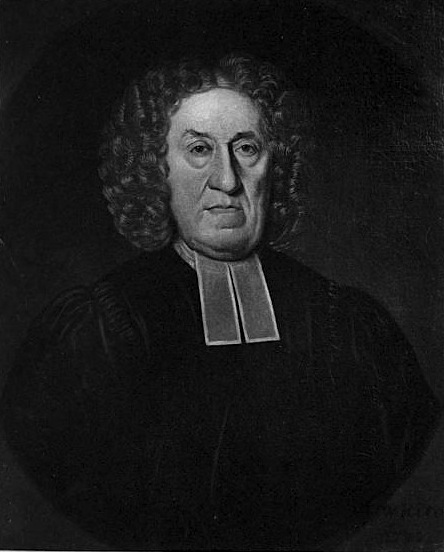
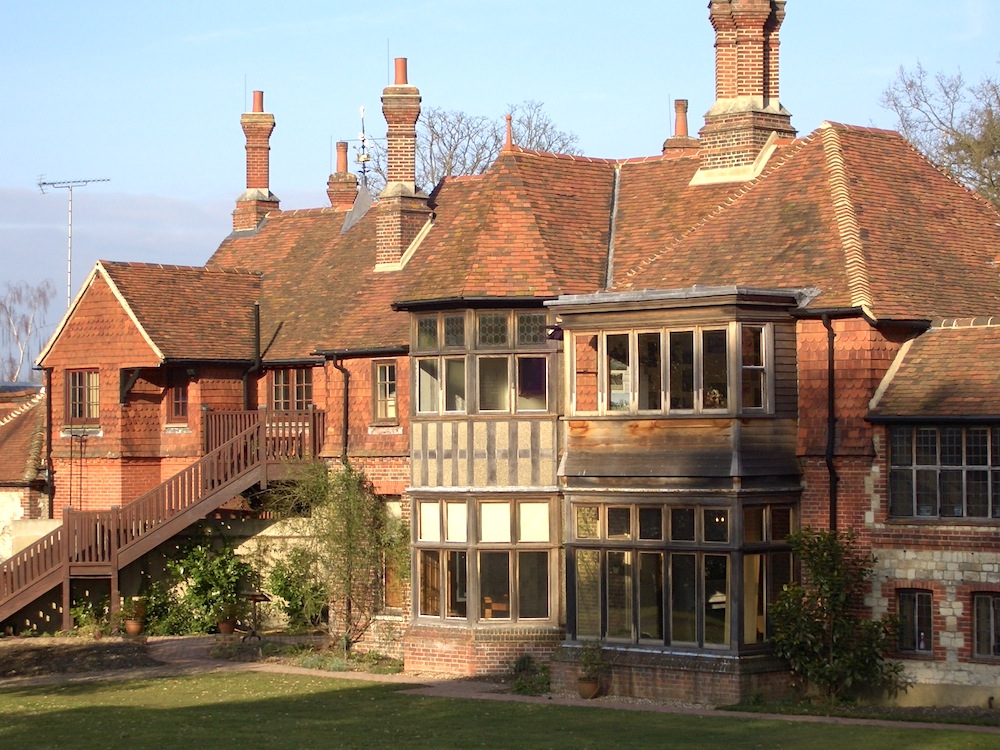
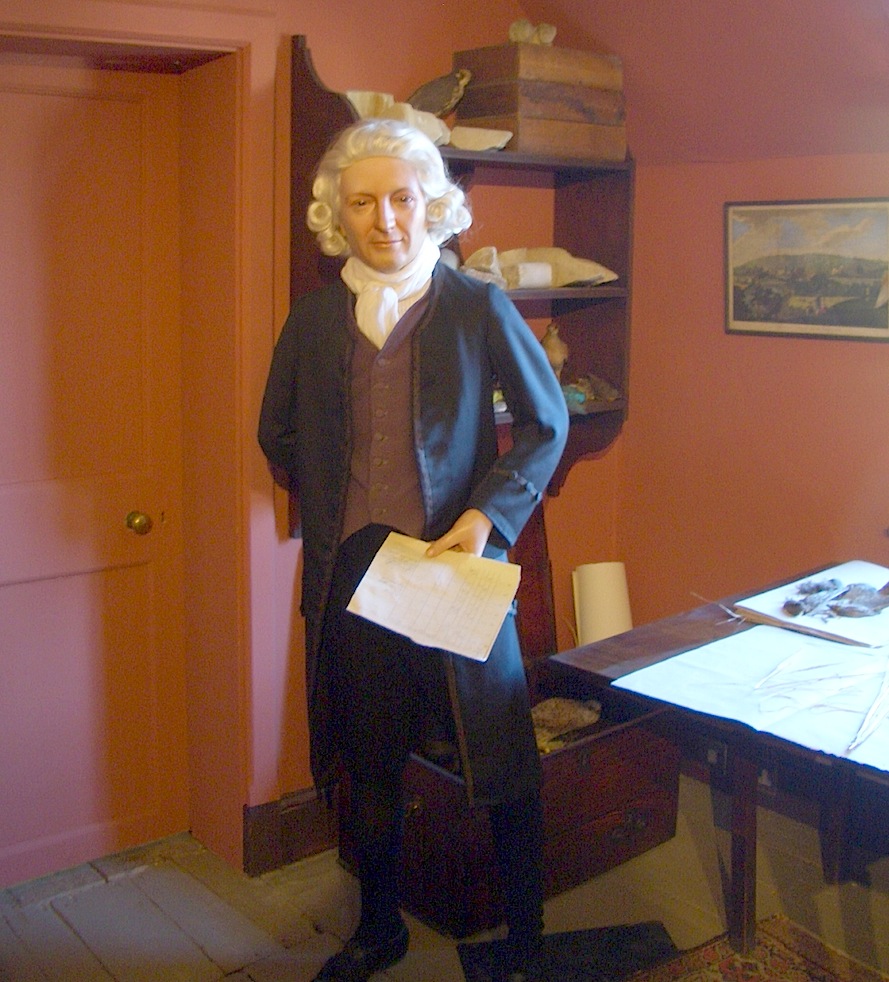
Left to right: (a) Frontispiece of Holt-White, with "Gil. White Vicar" signed below it. (b) Gilbert White's house at Selbourne, Hampshire, seen from its own grounds. (c) Waxwork of Gilbert White in his recreated study at the top of the house.
Gilbert White, a Fellow of Oriel College, Oxford, was a genial Hampshire curate who never married but enjoyed being an uncle to his numerous nephews and nieces and was popular with his parishioners. Although his close study of the wildlife in his parish could involve procuring (dead) specimens, generally birds, his observations come mainly from observing the behaviour of the living creature; he responded keenly to the rhythms of the natural world, and respected it for its own sake. His Natural History of Selborne (1788-9) was based on letters to two important naturalists of the day, but has endeared itself to generations of English people as much for its familiar style and anecdotal approach as for its meticulous observations. The following short passage from a letter to fellow-naturalist Robert Marsham, from Rashleigh Holt-White's similarly appealing Life and Letters of White, is a good example of all these qualities. Despite the degree of now-unfashionable anthropomorphism, it makes enjoyable reading.
The middle of last September was a sweet season! during this lovely weather the congregating flocks of house martins on the Church and tower were very beautiful and amusing! When they flew off all together from the roof, on any alarm, they quite swarmed in the air. But they soon settled again in heaps on the shingles; where preening their feathers, and lifting up their wings to admit the rays of the sun, they seemed highly to enjoy the warm situation. Thus did they spend the heat of the day, preparing for their Migration, and as it were consulting when and where they are to go! The flight about the church consisted chiefly of house martins, about 400 in number: but there were other places of rendezvous about the village, frequented at the same time. The swallows seem to delight more in holding their assemblies on trees. Such sights as these fill me with enthusiasm! and make me cry out involuntarily,
Amusive birds! say where your hid retreat,
When the frost rages, and the tempests beat! [236]
William Cobbett


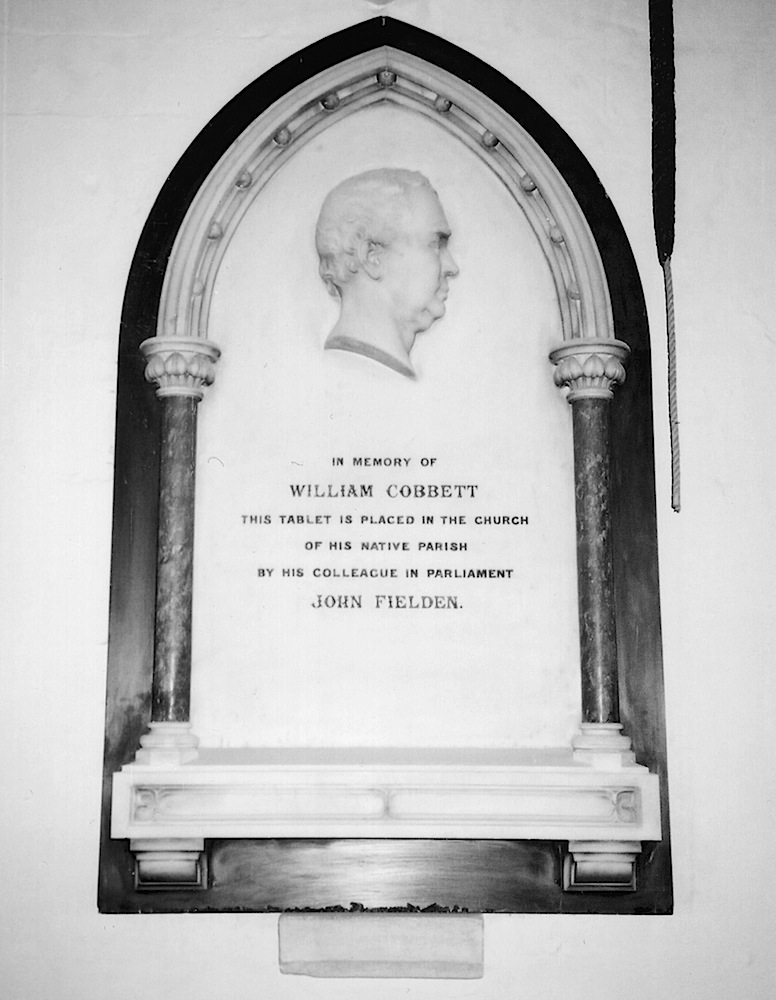
Left to right: (a) William Cobbett's birthplace in Farnham, Hampshire, originally called The Jolly Farmer. (b) Bust of Cobbett in the grounds of Farnham Musuem. (c) Memorial plaque to Cobbett in St Andrew's Church, Farnham, where he is buried.
Although William Cobbett became a great fan of White's, he differed greatly from him both in temperament and aims. A farmer at heart, he was a man of action as well as an observer, and rode through the English countryside, particularly the southern counties, gleaning first-hand information for political and economic reform. He too saw wildlife and scenery with a countryman's eye. However, his greatest sympathies lay with the country folk themselves, and he raged against the changes being imposed on them. He is best known for his "rants." Here is a typical one, sparked by his second rural ride past the mills at Chilworth in Surrey:
This valley, which seems to have been created by a bountiful providence ... has been, by ungrateful man, so perverted as to make it instrumental in effecting two of the most damnable of purposes ... namely, the making of gunpowder and of bank-notes! Here, in this tranquil spot, where the nightingales are to be heard earlier and later in the year than in any other part of England; where the first bursting of the buds is seen in Spring ... here has the devil fixed on as one of the seats of his grand manufactory; and perverse and ungrateful man not only lends him his aid, but lends it cheerfully! [97]
Cobbett was called "The Poor Man's Champion" because of his outspokenness in print and parliament. A robust, practical and adventurous man, he led a colourful life (enduring two spells in jail and spending some important years as an exile in America), published books on a variety of topics from English grammar to gardening, and was the original name behind Hansard, the long-running official record of parliamentary debates. Hansard was the printer to whom he sold his Weekly Political Register, where his book Rural Rides first appeared. Largely alienated from his family and generally disaffected, Cobbett died on his farm in Ash, Surrey, in 1835. As befits a man of action, his best memorial may be the Surrey countryside. His biographer George Spater concludes his two-volume account of him by saying, "Trees were grown, crops were cultivated, lives were shaped, by Cobbett's enthusiasms" (II: Epilogue).
Richard Jefferies

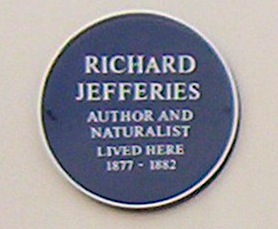
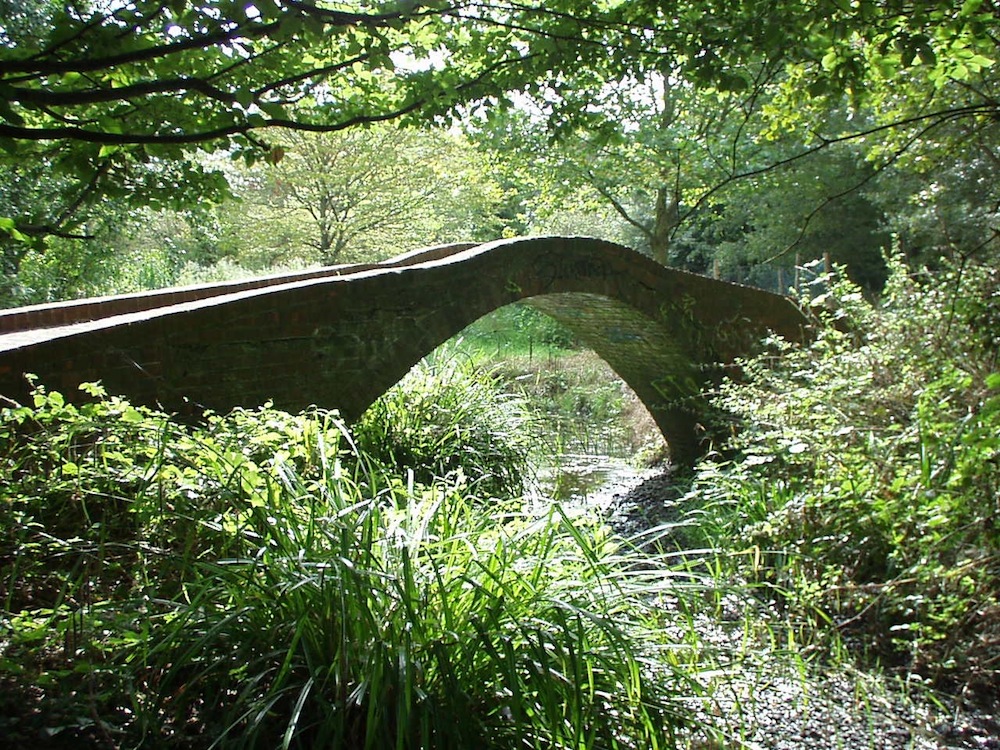
Left to right: (a) The flat in Surbiton where Jefferies lived (now, 296 Ewell Road) when trying to build up his career in London. (b) The plaque placed there in May 2003. (c) Bridge over the Hogsmill river: "There must be something in so sweet a stream" (Jefferies, Nature near London, 65).
Richard Jefferies regretted that White had had little to say about the human inhabitants of his parish, and, like Cobbett, expressed sympathy with the poor: "That any human being should dare to apply to another the epithet 'pauper' is, to me, the greatest, the vilest, the most unpardonable crime that could be committed" (The Story of My Heart, 160). But Jefferies himself was no campaigner. Rather, he was an introvert who was unwilling to engage with the contemporary (Victorian) world:
I want to be always in company with these, with earth, and sun, and sea, and stars by night. The pettiness of house-life — chairs and tables — and the pettiness of observances, the petty necessity of useless labour, useless because productive of nothing, chafe me the year through. I want to be always in company with the sun, and sea, and earth. These, and the stars by night, are my natural companions. [The Story of My Heart, 116]
Far from being physically robust, he was increasingly dogged by ill-health, and became more spiritual than spirited — a mystic, even a prophet. His vision of the future in After London (1885), and shows nature triumphing over urban development. The scenario he paints may still strike us as prophetic:
Thus the low-lying parts of the mighty city of London became swamps, and the higher grounds were clad with bushes. The very largest of the buildings fell in, and there was nothing visible but trees and hawthorns on the upper lands, and willows, flags, reeds, and rushes on the lower. These crumbling ruins still more choked the stream, and almost, if not quite, turned it back. If any water ooze past, it is not perceptible, and there is no channel through to the salt ocean. It is a vast stagnant swamp, which no man dare enter, since death would be his inevitable fate.
Thanks to the foul man-made detritus beneath, the triumph of nature is no boon to the nature-lover. This is nature still blighted by human greed and negligence:
There exhales from this oozy mass so fatal a vapour that no animal can endure it. The black water bears a greenish-brown floating scum, which for ever bubbles up from the putrid mud of the bottom. When the wind collects the miasma, and, as it were, presses it together, it becomes visible as a low cloud which hangs over the place. The cloud does not advance beyond the limits of the marsh, seeming to stay there by some constant attraction; and well it is for us that it does not, since at such times when the vapour is thickest, the very wild fowl leave the reeds, and fly from the poison. There are no fishes, neither can eels exist in the mud, nor even newts. It is dead. [49-50]
Jefferies' longing to be at one with nature, and fear of what human beings are doing to it, strike a chord with modern readers, and he has a cult following even today. In this, he seems to have fared better than his close contemporary, W. H. Hudson.
W. H. Hudson
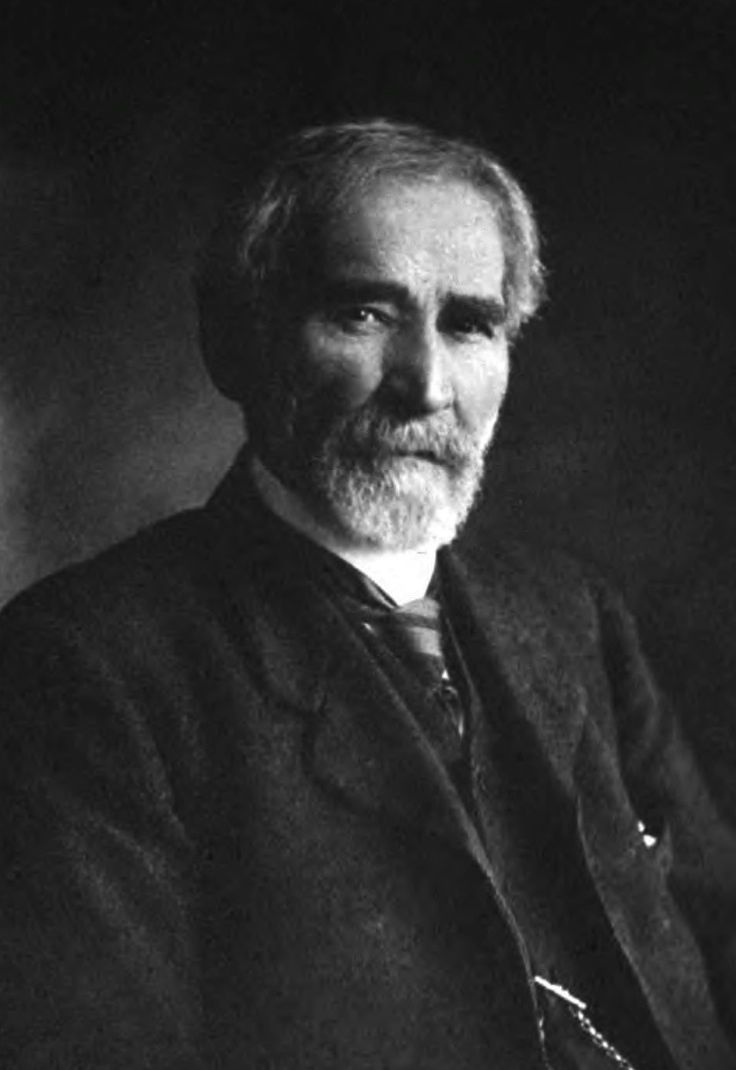
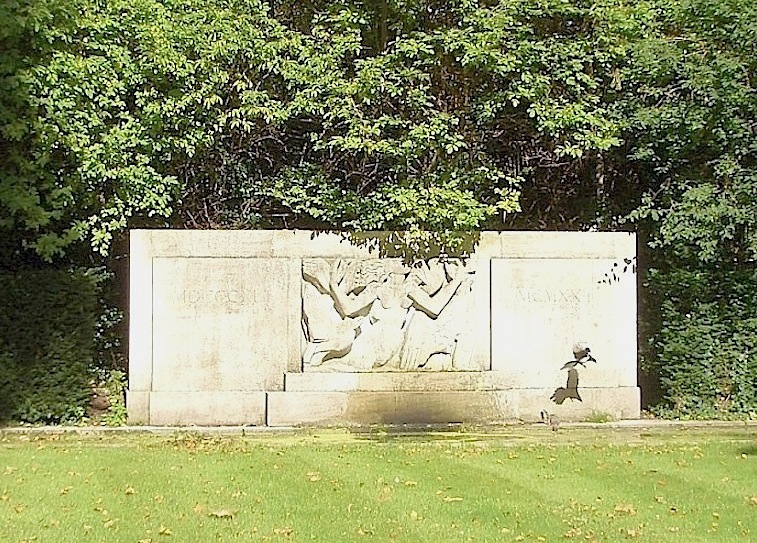
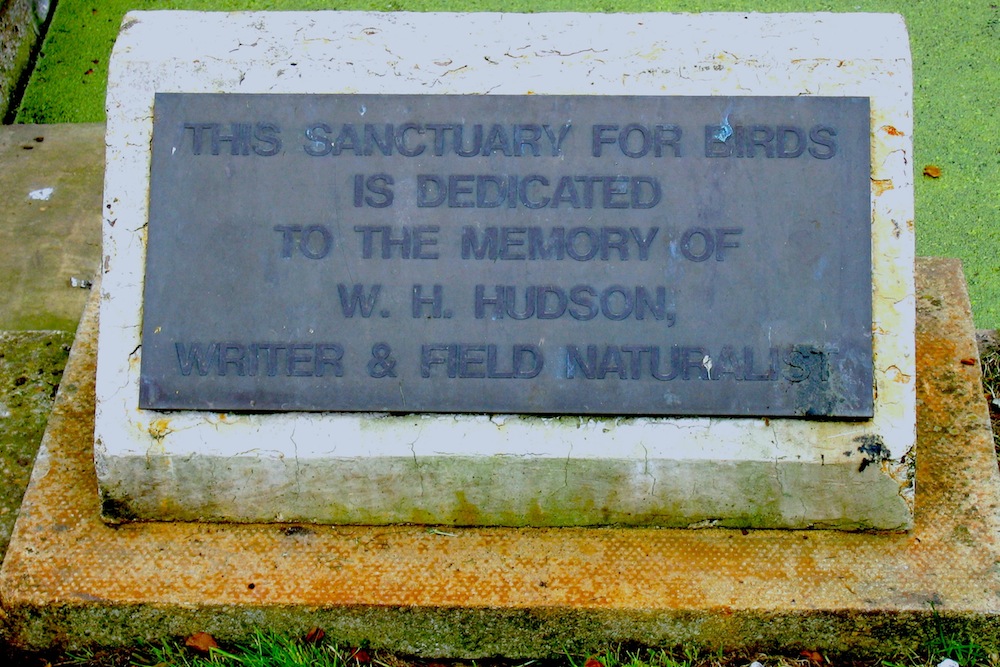
Left to right: (a) Hudson, frontispiece of Far Away and Long Ago. (b) The Hudson Memorial in Hyde Park, with sculptural relief of his heroine Rima, the tropical bird-maiden, by Jacob Epstein [Close-up of relief]. (c) Plaque dedicating this part of the park to Hudson.
William Henry Hudson's present comparative neglect might be at least partly because of the way he seems to stand back a little, while looking at his subject. W. J. Keith, for instance, has described him as "a sensitive and sympathetic stranger" (66, emphasis added). It is a natural assumption. Younger than Jefferies, Hudson was born in Argentina and only immigrated to England in 1874 when he was thirty-two, not becoming a naturalised British citizen until 1900. It took him many years to get established here. The first of his popular ornithological books, Birds in a Village (later revised to Birds in Towns and Villages), was published in 1893. This was followed in 1898 by Birds in London, and in 1900 by Nature in Downland.
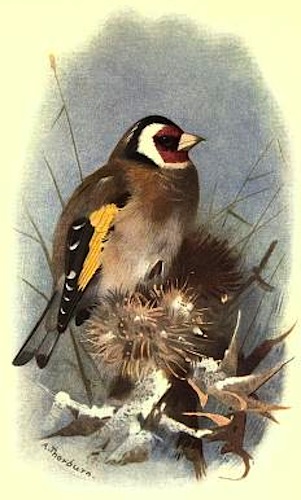
Goldfinch. Plate 5, by A. Thorburn, in Hudson's British Birds (facing p. 126).
Hudson, another tall, bearded rambler through the English countryside, wrote several other works about it, culminating in the posthumously published A Hind in Richmond Park (1922). In the title essay, he describes a curious and very dangerous encounter between the hind and a little girl dressed in red, whom he had encouraged to feed it. Naturally, the incident troubled him, and went over it again later, interpreting the hind's unexpected reaction in this way:
when insulted by the offer of an acorn by a creature in a scarlet mantle, she had savagely resented and resolved at the same time to accept the gift and punish the giver ... snatched the spray from the outstretched hand, then, on the instant of doing so, took a flying leap over the child's head, and at the moment of her forefeet touching the ground lashed out behind with so good an aim that she grazed the face, and, given an inch more, would have slashed it open with her sharp knife-like hind hoofs.
He cannot help concluding bitterly that the hind "had the best of the argument," and that he himself should have anticipated a problem. Indeed, "it would have been better that animal life had continued till the time of the dying of all life on the earth with no such development as that of the large-brained being who walks erect and smiling looks on heaven" (138).
Like Gilbert White, Hudson brought his observations of human life (and his self-knowledge) to bear on his field naturalism, in a way that might be frowned upon by natural scientists today. On the other hand, that being the case, it seems unfair to see such a deeply engaged observer as an outsider. It is hard to account for the current neglect of his nature-writing.
Hudson, like Jefferies, found his religion in nature, and had a poetic sensibility. In fact, he wrote some poetry, including a touching tribute to "The London Sparrow" — "O blithe heart in a house so melancholy." (The scarcity of sparrows in London now would have amazed him.) However, his poetry has none of the depth or singularity of his close friend Edward Thomas's. His novels, on the other hand, were far more successful than Jefferies'. The most influential was probably his animistic fantasy Green Mansions (1904), featuring the tropical bird-maiden Rima.
Hudson was buried beside his wife Emily in the same cemetery as Jefferies: Broadwater Cemetery, Worthing. The Sussex Wildlife Trust and the Royal Society for the Protection of Birds have put up a plaque to both writers at the entrance to the cemetery. The bird sanctuary of London's Hyde Park has the more striking monument to Hudson shown above, with a relief of his character Rima, sculpted by Sir Jacob Epstein. Not far from this memorial is Canning House, the headquarters of the Hispanic and Luso Brazilian Council, which has a fine collection of primary and secondary sources for Hudson in its library.
Related Material
- Eighteenth- and Nineteenth-Century Ornithologists
- Gilbert White in his study, depicted by Edmund J. Sullivan
- Gilbert White at his table, depicted by Edmund J. Sullivan
- Selborne from the Hanger, by Edmund H. New
- A View of White's House, by Edmund H. New
- White's Monument, by Edmund H. New
- Review of Drawn to Nature: Gilbert White and His Illustrators, by Simon Martin (2023)
Illustrations of White's birds
- White Owls, by Edmund H. New
- Missel-Thrush, by Edmund H. New
- Lapwing and Nest, by the Kearton brothers
- Sandpiper on Nest, by the Kearton brothers
- Blue Titmouse, by the Kearton brothers
- Red-Breast, by the Kearton brothers
Bibliography
Cobbett, William. Rural Rides. Ed. George Woodcock. London: Penguin, 1967.
Holt-White, Rashleigh. The Life and Letters of Gilbert White. 2 vols. Vol. I. London: John Murray, 1901. Internet Archive. Contributed by Gerstein Science Information Centre, University of Toronto. Web. 6 January 2016.
_____. The Life and Letters of Gilbert White. 2 vols. Vol. II. London: John Murray, 1901. Internet Archive. Contributed by Gerstein Science Information Centre, University of Toronto. Web. 6 January 2016. [Holt-White was Gilbert White's great-grandnephew.]
Hudson, W. H. British Birds. London: Longmans, 1921. Contributed by the University of California Libraries. Web. 6 January 2016.
_____. Far Away and Long Ago: A History of My Early Life. New York: Dutton, 1918. Hathi Trust. 6 January 2016.
_____. A Hind in Richmond Park. London: Dent, 1922. Internet Archive. Contributed by the University of California Libraries. Web. 6 January 2016.
Jefferies, Richard. After London; or Wild England. London: Duckworth, 1905. Internet Archive. Contributed by Robarts Library, University of Toronto. Web. 6 January 2016.
_____. Nature near London. London: Chatto & Windus, 1887. Internet Archive. Contributed by California University Libraries. Web. 6 January 2016.
_____. The Story of my Heart: My Autobiography. London: Longmans, 1883. Internet Archive. Contributed by Harvard University Library. Web. 6 January 2016.
Keith, W.J. The Rural Tradition: William Cobbett, Gilbert White, and Other Non-Fiction Writers of the English Countryside. Hassocks, Sussex: Harvester, 1975. This book has a useful bibliography.
Spater, George. William Cobbett: The Poor Man's Friend. 2 Vols. Cambridge: Cambridge University Press, 1982.
Created 28 November 2010
Last modified 9 July 2023